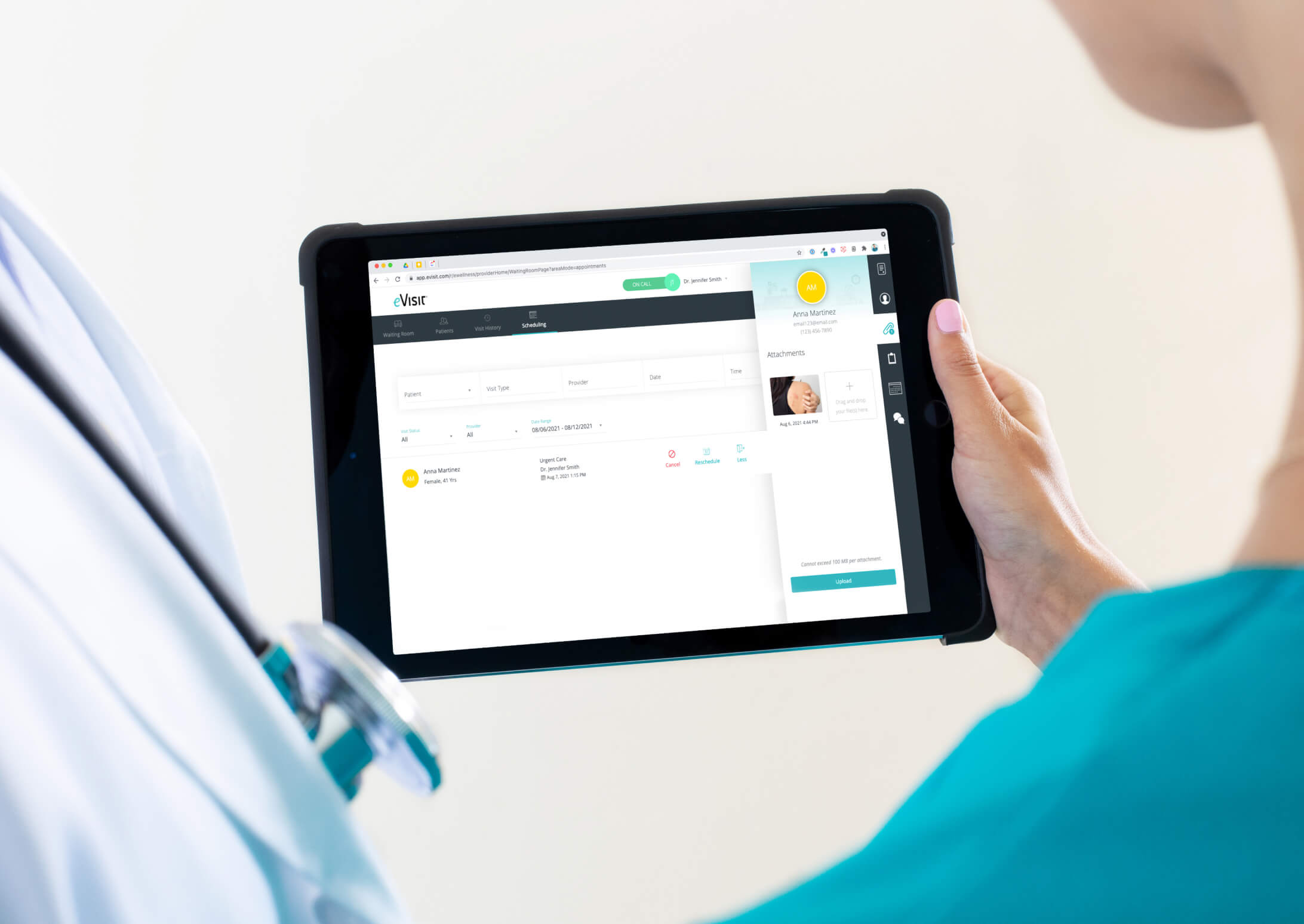Telemedicine Devices, Equipment, Technologies & Products
Telemedicine Carts
More complex telemedicine solutions, especially those used by larger health systems, usually require a telemedicine cart. This piece of telemedicine equipment gives providers a mobile frame and storage system to carry cameras, computers monitors, keyboards, computers, and mobile medical devices. The carts sometimes look similar to standing workdesks, with computer monitors attached at the top and wheels at the bottom for easy moving. Physicians can wheel these carts from room-to-room as they meet with patients and need to either record and transmit a patient’s medical data, or include a consulting physician from another location in the patient visit.
Usually, these carts are used at hospitals or other large health care systems. In some cases, however, a patient might have a telemedicine station set-up in their own home for easy access.
Telemedicine Kiosks
As more companies and retail clinics offer telemedicine solutions, many are adding on-site telemedicine kiosks. From the outside, these kiosks look a little like photobooths, and are usually stocked with all the equipment and commonly used mobile medical devices needed for a telemedicine visit. These kiosks are expensive and often only purchased by large companies or retail clinics to extend healthcare offerings to employees and pharmacy customers.
Digital Camera
In order to do any sort of video conferencing, you need a webcam at the very least. Some telemedicine providers offer high-end, high-resolution digital cameras for crystal-clear video capture. Others offer specialized medical examination tools with integrated cameras that allow healthcare professionals to take detailed medical images (for example, of the inside of a patient’s ear) and then share them with a specialist at another location. Because this kind of equipment is very expensive and often requires use by a medical professional, it’s usually used for store-and-forward telemedicine solutions between two healthcare providers.
Telemedicine Kit
Healthcare providers who are routinely providing frontline care in remote areas across the U.S. and around the world need portable, durable telemedicine kits. Telemedicine equipment kits often look like a sturdy briefcase or large medical kit. Inside, these kits may include a small computer with an integrated screen, a camera, and simple mobile medical devices.
Telemedicine Software
While more telemedicine solutions are moving to the cloud, some telemedicine providers still require the purchase of a software system that needs to be installed on a medical practice’s computers. These software solutions may require additional equipment like data storage hardware or servers. All software also should be checked for compatibility against a healthcare providers’ computer operating systems.
Some providers also require purchase of multiple telemedicine software solutions for different purposes. For instance, instead of one integrated software solution, a physician might need to purchase and implement one software program for live video conferencing, another for store-and-forward telemedicine, and another for collecting and monitoring patient medical data remotely. It’s best to look for an integrated solution that has everything you need in one place.
Read more: The Complete Guide to Telemedicine
Mobile Medical Devices
Mobile medical devices are often used by either healthcare professionals or patients to capture medical data and send it to a medical professional at another location. For example, a patient who has just had a heart attack and is being remotely monitored after hospital discharge may need a mobile ECG device to track their heart activity.
Some telemedicine providers offer packages with basic mobile medical devices, or even require purchase of a patient monitoring system. This type of telemedicine equipment might look like a handheld console that shows patients a series of questions (“Are you feeling better today?”), tracks their responses, and then sends the data to a physician via an internet connection. Other mobile medical devices might include a vital signs monitor or an ECG device.
In the case of store-and-forward telemedicine solutions, where a healthcare provider is examining a patient at one location and needs to share visual medical information with a doctor at another location, the equipment is more sophisticated. Telemedicine device companies offer a range of medical scopes that have integrated visual and audio recording devices. Some scopes allow the provider to capture images of the exam and then share with other devices via a USB port. Digital stethoscopes let physicians record and share a patient’s heart and lung sounds.
Watch now: How to Choose the Right Telemedicine Solution
Telemedicine Equipment: The Bottom Line
There’s a lot of innovative, sophisticated telemedicine equipment out there. But you don’t need most of this equipment to get started. As you’re considering a telemedicine solution, ask how much accompanying telemedicine equipment you’ll need to purchase. Do you need all of this equipment? How will you be using telemedicine? What’s the most important application for your practice? What’s the least amount of equipment you need to purchase to get started?
Remember that more equipment doesn’t just mean a higher price tag, it means more time and training for staff. Do your research before selecting a vendor and you’ll be less likely to overspend on telemedicine equipment and end up with an overcomplicated system. Get further insight with a telemedicine demo.



